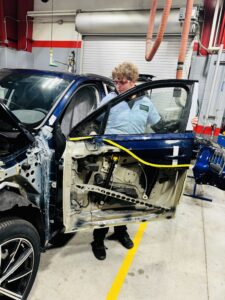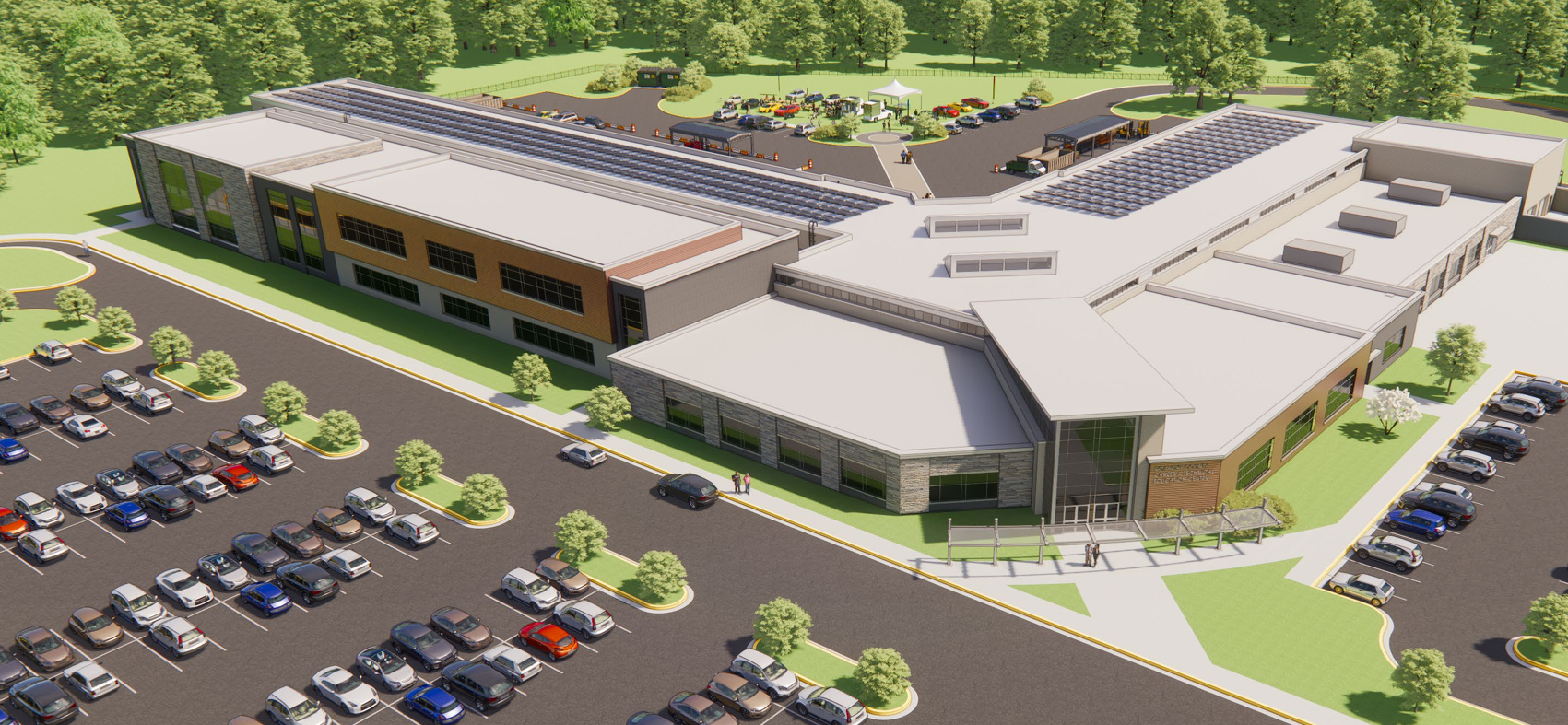
Roanoke County adding collision repair program to future CTE center
By onEducation
Roanoke County Public Schools plans to open a new Career and Technical Education (CTE) center in 2026 with a new collision repair program and hopes to gain all the industry help it can get to prepare students.
Initial clearing of the build site began Thursday and a survey is underway to name the center.
The nationwide technician shortage led the school system to add the program to its slate of CTE choices. A diesel technician program will also be added.
CTE Director Jason Suhr said the local collision repair industry has been ramping up the energy behind starting the program.
“Hearing about the need in the industry is part of the equation,” Suhr said. “We also did a survey of students, not just for collision repair, but various programs, and heard back that they would be interested in the program. You can have a program and if students don’t want to take it, it’s not going to do much good.
“We hear from industry that every one of the collision repair shops here in the Valley could hire at least one if not two, technicians immediately. There are a lot of industry [shops] and they’re hurting.”
Standard curriculum through the Virginia Department of Education will be offered through the program. However, Suhr said the school system and industry have come together to work toward the creation of a cutting-edge, future-looking program.
Suhr said one industry representative told him if all the school system is going to do is put in an “old-school bang-out the dents of your old jalopies,” then he didn’t want to be part of it. Instead, he and others, want the future students to learn the highly technical nature of collision repair to go into collision repair prepared to deal with new vehicles and technology.
“If a student comes in [the industry] with knowledge of that fundamental technician job, they can be better at estimating, they can be better in the front office,” Suhr said. “That background is really going to help them all the way through whether they go into estimating or whatever else is in that shop.”
The need for students to be taught the liability that comes with repairing vehicles post-collision has also been brought to the school system’s attention. The importance of knowing and following proper repair procedures and advanced driver assistance system (ADAS) calibrations will be incorporated into the program, Suhr said.
The 4,000-square-foot collision repair shop area of the CTE center will house a paint booth and all the relevant contemporary equipment and tools currently used in the industry. There will also be additional space for a classroom.
“We have good contacts within the collision industry, but we’re always looking for more to come alongside us and help us use our money wisely,” Suhr said, concerning purchasing tools and equipment. “We have an equipment budget to put into this facility, but we’ve got to make sure we do the best we can to make it really pop.”
An advisory committee made up of small and large shop representatives for the program has already been formed to do just that, to help find an instructor and more.
“We’re not experts in collision repair, they are,” said Chuck Lionberger, RCPS community relations director. “We are not just appreciative. We really need that input and that knowledge from the industry because we want to do this right and we want to make sure that what we’re providing for our students is the best way that we can prepare them to get a job.”
“Suhr added, “Making sure that we get industry perspective and industry counsel on equipment, what the space is going to look like, what we need to bring in to make sure that we have everything we need to start off on the right foot — that’s very, very important. We also are cognizant of the fact that there are older cars out there and our students are still going to have to be able to work on the older stuff too. So we want to make sure we’re not leaving that behind.”
He added that he hopes the industry will come alongside students as they advance in the program to help reduce the high expense of purchasing tools for their jobs.
“The school system would be hard-pressed to fund that type of thing ourselves,” he said. “I think these are the things that business and industry need to think outside the traditional box they’ve been in… to lure people into these [CTE] careers.”
The two-year program will accept up to 60 students at a time and will lead to a paid registered apprenticeship that earns an industry-recognized credential.
On average, Suhr estimates there will be 20-30 graduates per year of the program, depending on the number of students taken each year. For example, 40 might be taken the first year and when they move on to their second year, 20 new students begin the program.
Suhr noted an ongoing shortage of CTE instructors and that not only will the RCPS collision repair instructor need technical knowledge, they’ll also need to be willing to help build and energize the program to draw kids to it.
“Most often, a program will live or die by the instructor,” he said. “There’s a lot of opportunity in careers like collision repair that students can make a great living. I think for decades, we as a society have diminished the value of a lot of those careers and we need to bring that back. We’re making strides that way here in Roanoke County, slowly.”
Lionberger and Suhr said part of the work in building the program is reaching younger students, down to the elementary level, to pique interest in collision repair and other trades, as well as reaching their parents and school counselors to inform them of CTE career pathways.
Images
Featured image: File photo of a student at JB Hensler College and Career Academy student in Texas working on a 2022 Audi vehicle. (Provided by the Collision Repair Education Foundation)
Artist rendering of the future CTE center and video of renderings courtesy of Roanoke County Public Schools

